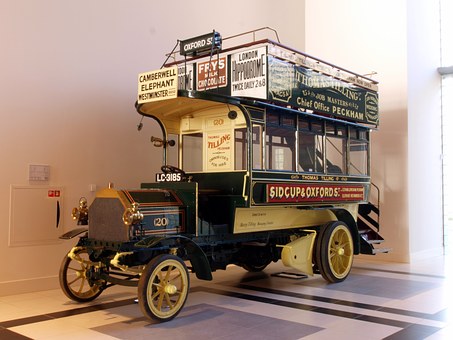Needle stick injuries: management and post exposure prophylaxis

Use of sharps is inherent in practice of dentistry
. Sharp injuries are more likely in dentistry due to a small operating field, decreased visibility and accessibility and frequent patient movement. It has been established that occupational blood exposures carry a certain risk of transmission for blood borne infections.1 Sharps are defined as comprising of needles, syringes, scalpels, blades, glass, i.e. anything that may cause puncture and cuts. These include both used and unused sharps.Sharps need special attention while being segregated and stored because needles can act as a pool where pathogens may survive for a long time because of the presence of blood. More than 20 infections can be transmitted through needle sticks, involving viruses, bacteria, fungi, and other micro-organisms. The greatest concern is the transmission of HIV, hepatitis B and C. The risk of infection after exposure to infected blood varies by blood borne pathogen. The risk of transmission after exposure to HIV-infected blood is about 0.3%, whereas it is estimated to be up to 100 times greater for hepatitis B virus (30%) and could be as high as 10% for hepatitis C virus. 2, 3 The other diseases include: blastomycosis, brucellosis, cryptococcosis, diphtheria, cutaneous gonorrhoea, herpes, mycoplasma caviae, Rocky Mountain spotted fever, sporotrichosis, syphilis, toxoplasmosis, tuberculosis, malaria and mycobacteriosis. Many of these diseases are transmitted in rare events, but it still demonstrates that needle-stick injuries can have serious consequences.4 Exposure can result in a variety of health effects for the individual, ranging from mild to extreme anxiety to chronic illness and premature death as well as significant effects on an individual's family and community, both short term and long term.
Surveillance of needle stick injuries on healthcare workers of NHS has been done. Surveillance Centre had received 827 reports of exposures to material from patients with antibody to HIV, hepatitis C or hepatitis B. Of these, 242 workers were exposed to HIV.5
Variety of sharps are used in various procedures and are unique to dental practice like wires for IMF, endodontic files, dental burs, blades, perio scalers and hollow bore needles. Hypodermic needles constitute an important part of the sharps and are particularly hazardous because they are often contaminated with blood.These can accidentally puncture through the skin and enter the deeper tissues. As sharps have been linked with the transmission of blood-borne pathogens, with sharps injury some amount of innoculum enters the body leading to sero conversion6. Practitioners must be aware of acts or omissions likely to cause an accidental injury.

The basics of safe practice when using sharps7
Where possible, replace the use of sharps with other instruments or procedures;
Used needles should never be bent or broken;
Sharps should not be passed from hand to hand;
All individuals have a personal responsibility to dispose of used sharps in a safe manner;
Used sharps should be discarded into a sharps container as soon as possible;
Sharps containers should be close to clinical areas but away from locations which may involve injury to patients, staff or visitors;
Sharps containers should be securely closed when three-quarter full
Safe Recapping Procedures.8
In situations where recapping is considered necessary, safe methods should be followed. Sharps should never move to an unprotected hand.
Single-Handed Scooping: Recapping can be safe when people lay the cap on a flat surface and scoop it onto the tip of a syringe held in one hand. They must keep the free hand away from the sheath and well behind the exposed needle.
Recapping Devices: Many devices have been marked for safe capping .These devices permit single-handed recapping by parking a needle cap on a flat surface. Other devices are designed to protect the hand that holds the cap during two-handed recapping procedures. Practically use of these has not been evaluated
Suggested action following a needle-stick injury7
Encourage bleeding at the site of injury: if percutaneous exposure occurs, bleeding should be encouraged by pressing around the site of the injury (but taking care not to press immediately on the injury site). Should be done under running water;
Wash the wound with antiseptic lotion/soap and hot water and dry the hands
Apply povodine-iodine to the wound;
Cover the wound with an occlusive dressing
Identify the source of needle contamination if possible.
Testing of needles or other sharp instruments causing an exposure, regardless of whether the source is known or unknown, is not recommended. Since there is no reliability on such tests and testing might be hazardous to persons handling the sharp instrument.
Systematic evaluation of exposure is mandatory: Should record the nature of the procedure, the type of instrument involved, the depth of injury, the size of inoculum, and the time elapsed between the use of the instrument and the exposure. Most important is to know the immunization status of the health worker and to know the disease state of the source person.
Post exposure prophylaxis PEP
Post-exposure prophylaxis is generally understood to mean the medical response given to prevent the transmission of blood-borne pathogens following a potential exposure to HIV, HBs Ag, HCV and other virus.9
Post-exposure prophylaxis should be initiated as soon as possible, within hours and no later than 72 hours following the potential exposure.
According to the results of animal studies, initiating PEP within 12, 24 or 36 hours of exposure is more effective than initiating it 48 or 72 hours following exposure10
HIV PEP should be taken, if exposure occurred within the past 72 hours; the exposed individual is not infected or not known to be infected with HIV; mucous membrane or non-intact skin was significantly exposed to a potentially infectious body fluid; the source is HIV-infected or the HIV status is unknown.
If the source person is reported to be positive, the confidentiality should be maintained.
Prophylactic regimen for HIV9: A regimen comprising two nucleoside-analogue reverse-transcriptase inhibitors is recommended
Preferred regimen
Alternative regimen
zidovudine + lamivudine
One tablet (300 mg of zidovudine
with 150 mg of lamivudine)
twice daily
*A complete course of PEP comprises 28 days of medicine.
Tenofoviremtricitabine
(Truvada)
One tablet (300 mg of tenofovir
with 200 mg of emtricitabine)
once daily*
OR
stavudine + lamivudine*
for 28 days
Atazanavir with a ritonavir boost or saquinavir with a ritonavir boost in addition is preferred.
** The HIV test detects the antibodies produced by a person who has been infected with the HIV virus. However, the test will not give a positive result until sufficient levels of antibodies are present in the blood of an infected individual. The period between the time of infection and the point at which there are sufficient antibodies is known as the window period. Almost everyone living with HIV (99%) will have detectable levels of antibodies three months following transmission.
HEPATITIS B- Blood contains the highest HBV titres of all body fluids and is the most important vehicle of transmission in the health-care setting. Routine preexposure vaccination of HCP against hepatitis B and the use of standard precautions to prevent exposure to blood and other potentially infectious body fluids have been recommended.
PEP FOR HBV11 Regimens involving either multiple doses of Hepatitis B immunoglobulin (HBIG)alone or the hepatitis B vaccine series alone are 70%-75% effective in preventing HBV infection.12 In the occupational setting, multiple doses of HBIG initiated within 1 week following percutaneous exposure to HBsAg-positive blood provides an estimated 75% protection from HBV infection .13 If the person who is not vaccinated or antibody response is unknown, Hepatitis B immunoglobulin (HBIG) should be given as soon as possible and hepatitis vaccine should be completed. If previously vaccinated and known responder no treatment is necessary. If source person is HBV positive then hepatitis B immunoglobulin should be administered
Immune globulin and antiviral agents (e.g., interferon with or without ribavirin) are not recommended for PEP of hepatitis C. For HCV post exposure management, the HCV status of the source and the exposed person should be determined, and for HCP exposed to an HCV positive source, follow-up HCV testing should be performed to determine if infection develops.14
Conclusion
Many workers do not report their injuries or no defined protocols followed in health care system. Most of these injuries are avoidable if safe practices are taken care. PEP may never be considered 100% effective.15 It is therefore imperative that post-exposure prophylaxis policies reinforce the importance of primary prevention and risk prevention counselling in all setting
References
1.Rapiti E, Prss-stn A, Hutin Y. Sharps injuries: assessing 1. the burden of disease from sharps injuries to health-care workers at national and local levels. Geneva, World HealthOrganization, 2005 (WHO Environmental Burden of Disease Series, No. 11; http://www.who.int/quantifying_ehimpacts/publications/ebd11/en/index.html)
2. Gerberding JL. Incidence and prevalence of human immunodeficiency virus, hepatitis B virus, hepatitis C virus, and cytomegalovirus among health care personnel at risk for blood exposure: Final report from a longitudinal study. J Infect Dis. 1994;170:1410-12
3 Rele M, Mathur M, Turbadkar D. Risk of needle stick injuries in health care workers - A report. Indian J Med Microbiol. 2002;20:206-7. [PubMed]
4. Needle sticks injuries: OSH answers http//.www.ccohs.ca [home page on internet] accessed on 3-9-10
5. Elmiyeh.B. Needlestick injuries in national health services PHLS July 2004 www.ncbi.nlm.nih.gov /pmc/articles/PMC1079524/pdf/0970326.pdf
6. Centers for Disease Control and Prevention. Immunization of health-care workers; recommendations of the Advisory Committee on Immunization Practices (ACIP) and the Hospital Infection Control Practices Advisory Committee (HICPAC). MMWR 1997;46(RR-18):1-51.
7. NIOSH alert: preventing needlestick injuries in health care settings. Cincinnati, OH: Department of Health and Human Services, CDC, 1999; DHHS publication no. (NIOSH) 2000-10.
8. Routine practices and additional practices for prevention of transmission of infection. The Laboratory Centre for Disease Control's Bureau of Communicable Disease Epidemiology.
http//www.phac aspc.gc.ca/publicat/ccdr-rmtc
9. Post-exposure prophylaxis to prevent HIV infection : joint WHO/ILO guidelines on post-exposure prophylaxis (PEP) to prevent HIV infection.[home page on internet] http.//www.who.int ... Topics Post-exposure prophylaxis
10. Martin LN et al. Effects of initiation of 3-azido,3-deoxythymidine zidovudine treatment at different times after infection of rhesus monkeys with simian immunodeficiency virus. J Infect Dis 1993, 168:825835
11. CDC. Immunization of health-care workers: recommendations of the Advisory Committee on Immunization Practices (ACIP) and the Hospital Infection Control Practices Advisory Committee (HICPAC). MMWR 1997;46(No. RR-18).
12. Beasley RP, Hwang L-Y, Stevens CE, et al. Efficacy of hepatitis B immune globulin for prevention of perinatal transmission of the hepatitis B virus carrier state: final report of a randomized double-blind, placebo-controlled trial. Hepatology 1983;3: 13541
13. Grady GF, Lee VA, Prince AM, et al. Hepatitis B immune globulin for accidental exposures among medical personnel: final report of a multicenter controlled trial. J Infect Dis 1978;138:6253
14. Updated U.S. Public Health Service Guidelines for the Management of Occupational Exposures to HBV, HCV, and HIV and Recommendations for Postexposure Prophylaxis. Recommendations and Reports June 29, 2001 / 50(RR11); 1-42
15. Garcia M et al. Post-exposure prophylaxis after sexual assaults: a prospective cohort study. Sex Transm Dis, 2005, 32:214
Needle stick injuries: management and post exposure prophylaxis
By: Dr Shruthi R Auto Insurance-What is Full Coverage? Cheap Auto Insurance in Pennsylvania Auto Insurance Cost In Florida Pittsburgh Steelers Tickets : The Steelers Suffered A Rash Of Injuries In The 1980 Season Auto Insurance Quotes – 3 Do's and 3 Don'ts Auto Insurance Texas – Why You Need It Even If You Don't Have A Car Decisions To Make When Renting Trucks In Canada What Exactly Is The Best Way To Gather Auto Insurance Quotes? Tips To Look Into When Starting Up An Auto Body Shop Consejos A La Hora De Comprar Un Auto Usado Auto Insurance For Young People - Save on auto insurance without pushy sales calls Where do you take used fork lift trucks for servicing? Cómo Solucionar "el Autosabotaje"